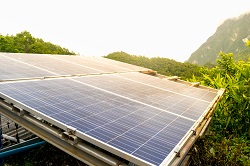Fast track to new markets for solar energy
Concentrating photovoltaics (CPVs) use mirrors to concentrate sunlight. The sunlight is focused on solar cells, increasing the efficiency with which they convert sunlight to electricity. CPVs are the newest kid on the block when it comes to the solar energy sector, despite being around since the 1970s. Just coming to commercial fruition, CPV technology is gaining ground particularly in sunny regions. It is likely to play a key role in meeting tomorrow's energy challenges and mitigating the impact of global climate change, but requires technological improvements for greater durability as well as lower costs in order to be truly competitive. EU-funded scientists associated with the project 'New applications for CPV's: A fast way to improve reliability and technology progress' (NACIR) are putting the agenda on the fast track through testing and development in harsh environments. The off-grid CPV system in the Egyptian desert is now fully functional and is being used for pumping water, desalination and irrigation. It sports a highly reliable tracking system to optimise capture of the Sun's rays. The grid-connected installation in Morocco was facilitated through a temporary agreement with the Office National d'Electricité (ONE) and was successfully deployed. Its target market is very high-altitude applications. Scientists have also begun compiling a comprehensive database of performance parameters and components in CPVs worldwide. Having access to such a large volume of CPV data is enabling NACIR to contribute to a draft of standards for CPV module rating. Researchers have also improved CPV components and their performances for the targeted markets. NACIR researchers have produced enhancements to CPV technology for applications to new markets, including very harsh environments and very high altitudes. Commercialisation of high-efficiency, low-cost CPVs could be around the corner with a wealth of socioeconomic benefits associated with their use.







